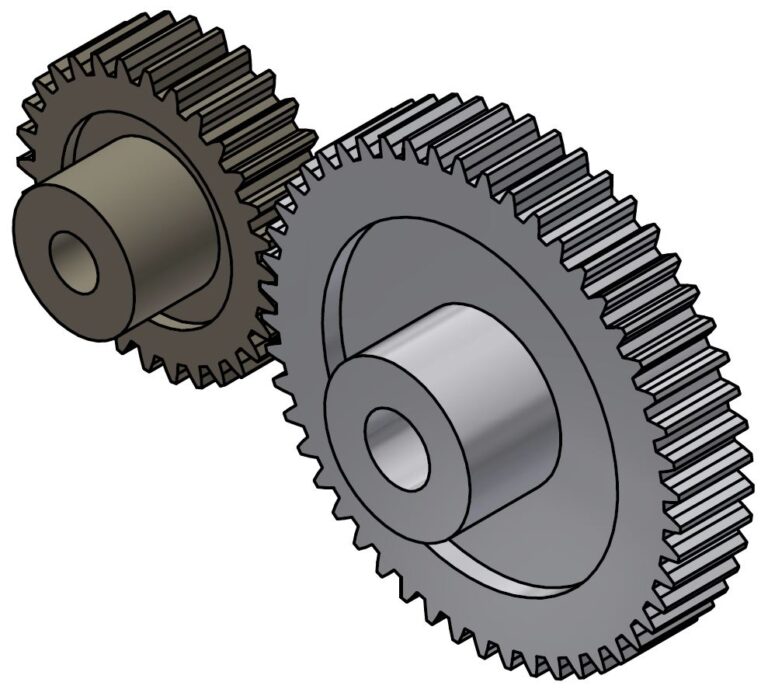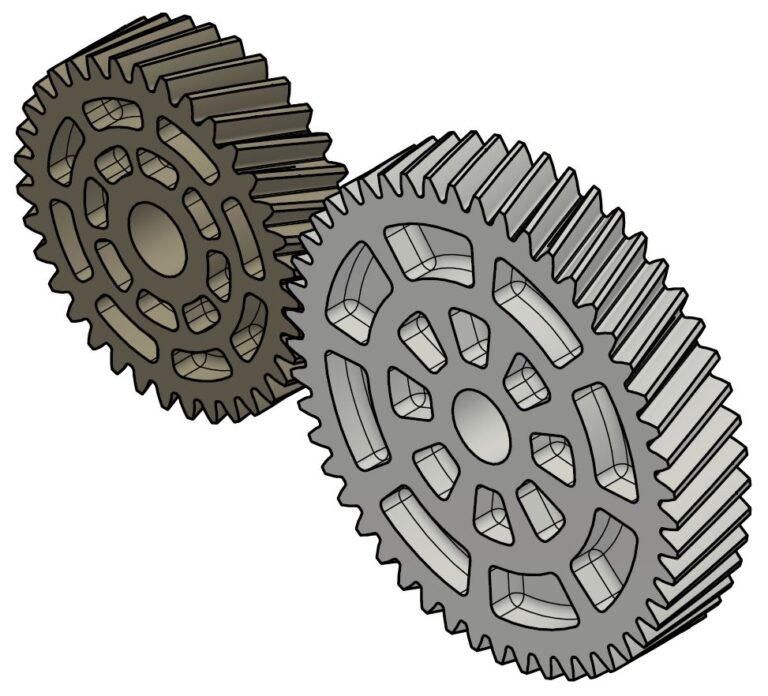The difference between helical gears and straight gears
shagemann | 3. November 2022
Gears come in all shapes and sizes. There are different gear types for different applications. But some gear types have a very similar design and can be used in comparable applications. This blog article deals with the distinction between straight and helical gears and their applications.
Straight spur gears
Straight spur gears are the most common type of gear. If you were to ask someone to describe what a gear looks like, they would most likely describe a straight spur gear: straight teeth that interlock with other spur gears and are arranged evenly around a circular body.
Design simplicity makes spur gears very cost-effective and quick to produce. At higher speeds, however, straight spur gears generate much more noise and vibration, so they are better suited to low-speed applications.
Spur gears are most commonly used in applications such as coffee machines, beverage vending machines, cash machines, automotive actuators, etc.

Helical spur gears
Helical gears differ from straight gears in their shape; helical gear teeth are not straight but, as the name suggests, arranged obliquely. Helical gears can transfer more force than straight gears can.
But the helical gearing generates axial thrust. This axial force must be absorbed, or two helical gears must be combined (herringbone gearing or double helical gearing) to form a single gear.
The axial forces increase bearing wear.

Cars are one application that uses both straight and helical gears. Helical gears are used in forward gears, and straight gears are used in reverse gear. This is reflected in significantly greater noise or reverse gears.
